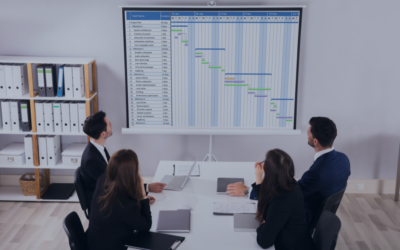If your organization is considering moving to a cloud-based ERP solution like Acumatica, you’ve made the right decision. The benefits of cloud technologies can take your business to new heights in growth and efficiency.
However, you might wonder how to create a realistic budget for purchasing and setting up the software to meet your needs. With so many factors affecting the pricing of an ERP platform, it can be a complex process to figure out the overall cost so that you know what to expect. Still, one of the most important considerations when choosing an ERP system is pricing, and you cannot afford to start a project blind to the potential costs.
In this article, we will explain the Acumatica Cloud ERP pricing model, including the factors that influence pricing, the different tiers available, and how businesses can choose the right plant for their needs.
Whether you’re a small business just starting out or a large enterprise with complex needs, understanding Acumatica’s pricing model can help you make an informed decision.
Overview of factors that affect Acumatica Cloud ERP Pricing
Many other ERP vendors charge businesses simply on a per user basis. Thus, with each new supplier or customer who needs access to the system comes additional costs. This can especially affect smaller organizations that are constantly growing. This kind of pricing model goes against the claimed principles of cloud technology and restrains businesses instead of giving them the flexibility they thought they were buying. Acumatica, does things differently. Acumatica’s pricing model is different, it’s based on three factors:
- Applications or modules you need
- License type
- The amount of data and computing power required
That way, you can pick the features you want and need for your business. Once you have a setup that works for you, you can then give access to any users who need access with zero additional cost.
Applications you choose
The applications and modules that you choose are key factors in affecting the price of Acumatica Cloud ERP. Each module has its own pricing based on the specific features and functionalities it provides. Acumatica Cloud ERP provides the following applications:
- Financial
- Customer Relationship Management (CRM)
- Project Accounting
- Business Intelligence and Reporting
- Manufacturing
- Distribution
- Field Services
- E-Commerce
You can start small by just picking a few applications and then adding more later as your business grows. Or you could start with several of them right off the bat and quickly unlock all the advantages that an advanced cloud-based ERP system can provide.
License type
The license type you choose also has a big impact on the pricing of your Acumatica Cloud ERP implementation. You can license Acumatica in one of three ways:
- SaaS subscription
- Private cloud subscription
- Private perpetual license
The first option is the SaaS subscription. With this license, you pay an annual fee to run the software on the public cloud. Because many different users share the public cloud, this type of license is usually the most affordable option.
The next choice is the private cloud subscription. Some organizations processing highly sensitive data might have governance requirements that prevent them from utilizing a public cloud. With a private cloud subscription, you pay an annual fee to run the software on your own servers or through a third-party hosting provider. Instead of running the software on servers that are shared by other users and applications, your ERP application would have its own dedicated server.
Finally, there is the private perpetual license. With this license type, you pay a single fee for the license and then a recurring annual maintenance fee for the software. You would then deploy the software on your own server. This is the legacy pricing model and the most expensive in terms of upfront costs.
Projected transaction volume/consumption-based pricing
The final factor that’s going to affect the pricing of your Acumatica Cloud ERP solution is the amount of data storage and computing power required to meet your needs. The projected transaction volume will play a part in the pricing to ensure that you end up with a solution that has the capabilities to help you achieve your goals. Figuring out the number of resources you’ll need can be difficult to do on your own. Fortunately, you don’t have to. Our Acumatica experts will help you find the fit that’s perfect for you and your business.
As with the applications, Acumatica gives you flexibility. You can purchase as much or as little as you need.
Additional costs and considerations
There are a few considerations to keep in mind with the pricing of a cloud-based solution like Acumatica. First of these is the implementation and customization costs. If your business has unique requirements or highly specific industry processes, you might need to adapt the software to suit your specific needs. If you need custom modules or features as part of your Acumatica implementation, this will increase the cost. Integration can be another additional cost. Especially if you have several software solutions you want to integrate into your new cloud-based ERP solution. This will increase both the time and expenses associated with the implementation.
You should also factor in the costs of maintenance and support. If you opt for a SaaS license, your maintenance costs will be nearly zero. However, if you opt to use your own private servers or those of a third-party hosting provider, you will need to consider the cost of having a team of IT professionals to support and maintain your hardware, either your own or your hosting provider’s.
The two last considerations you should know are third-party add-ons and training. As with integrations, third-party add-ons can contribute to the cost. Ultimately, your new system is only going to be as effective as the employees using it. This means that you will need to budget for training your team to use the new system.
The true cost of implementing Acumatica
Understanding Acumatica Cloud ERP pricing is crucial for businesses looking to implement an ERP solution. Acumatica offers a flexible pricing model that allows businesses to only pay for the features they need without sacrificing scalability or functionality. Avoid the large upfront costs associated with legacy ERP implementations and instead pay a monthly subscription fee based on usage. This makes it easier for businesses to budget and plan for their technology investments.
Take the next step in your journey to discover whether Acumatica is the right ERP for you. Request your personalized quote today.



